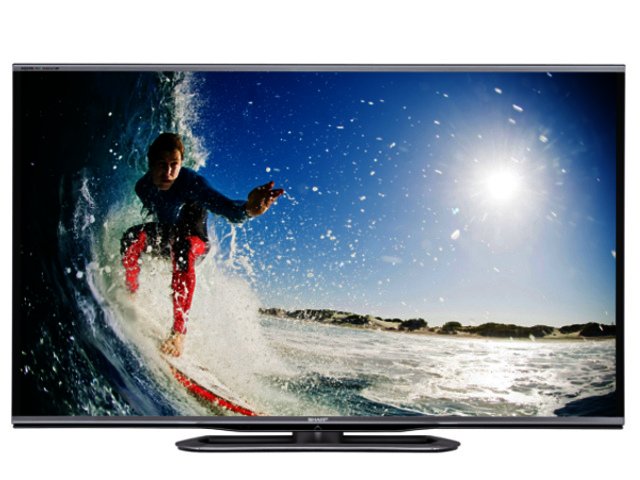Sharp launches massive Aquos LED TV in South Africa
By Hanleigh Daniels 3 September 2013 | Categories: news
Sharp has launched its new Aquos LED TV range in South Africa at a function held at Montecasino last night. The jewel in the Aquos line is the massive 90" LED 3D Smart TV, which is, according to the company, the world’s biggest commercially available television set.
The 90" Aquos LED TV boasts Sharp’s X-Gen Panel Technology, which the company says results in improved image contrast quality at a reduced rate of power consumption. The latter is enabled by the TV automatically adjusting its brightness depending upon the ambient room lighting level in a user’s entertainment area in order to save power.
This set sports a full HD (1080p) resolution as opposed to the UHD (ultra HD formerly known as 4K; 3840 x 2160) resolution seen on competing HDTVs from the likes of Sony and LG. It also features active 3D technology that enables users to switch between 3D (3D glasses required) and 2D on-the-fly and for 2D content that can be converted to 3D. Furthermore, Sharp’s partnership with Yamaha offers an enhanced surround sound audio experience.
To the point
At the launch, TechSmart was able to survey all of the sets in action and can definitely say that, as one can expect from an LED panel, they offer really vibrant colours, also offering excellent viewing angles as well as blur-free 3D videos.
Unfortunately, the massive 90" Aquos LED 3D TV packs an equally behemoth price tag of R250 000, which is actually still a great deal more affordable than Samsung’s 85" UHD Smart TV at a pricey R385 000.
Luckily, the full list of Aquos LED TVs from Sharp includes more affordable and compact sets. The 80" model is priced at R125 000, whilst the 70" version goes for R45 000, and the 60" with 3D model sets buyers back just R25 000. Those users who, like us, can do without 3D, can opt for the entry-level 60" model which sports a recommended retail price of R20 000.
In related TV news, Google recently revealed its answer to Apple’s AirPlay in the form of Chromecast, which is essentially a dongle that occupies a TV’s HDMI port and enables users to stream online multimedia content to their TV from a multitude of devices.
Most Read Articles

Have Your Say
What new tech or developments are you most anticipating this year?



